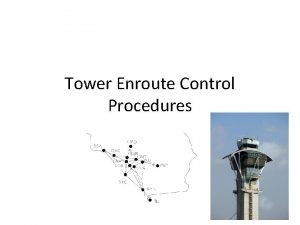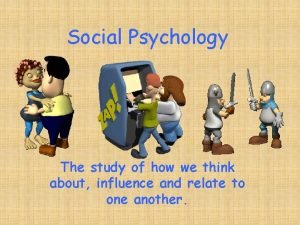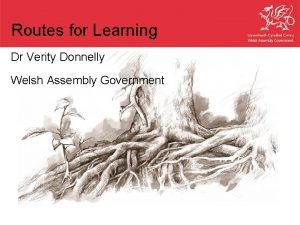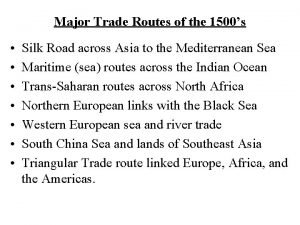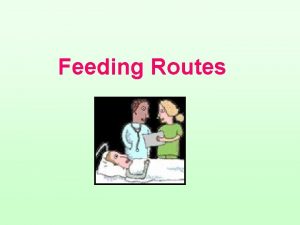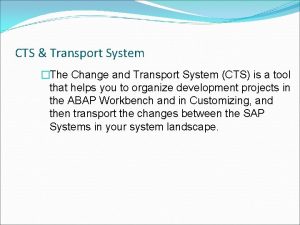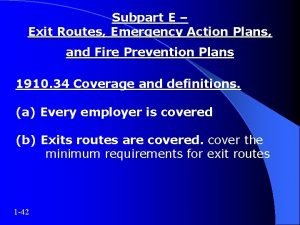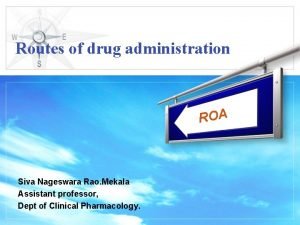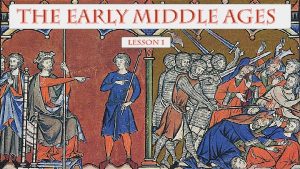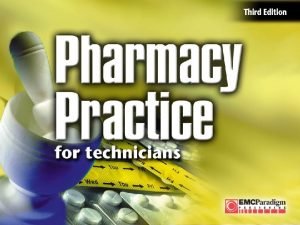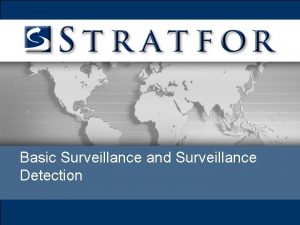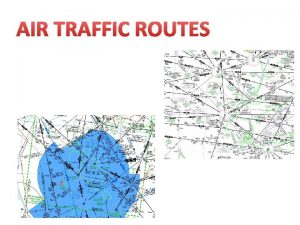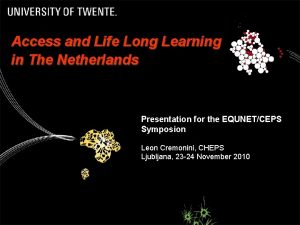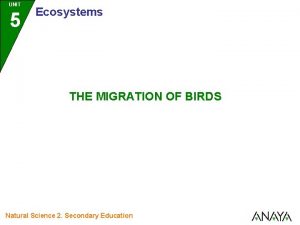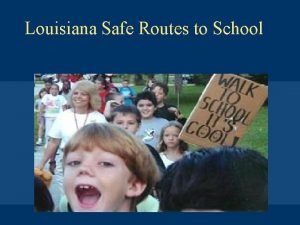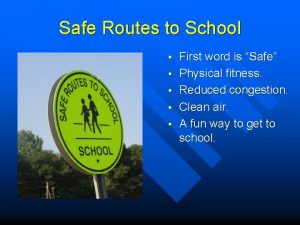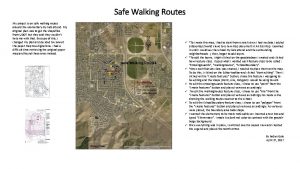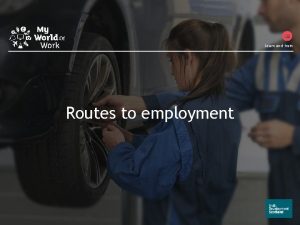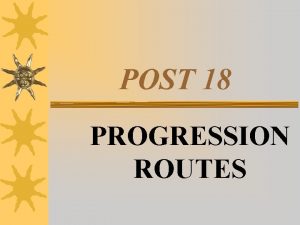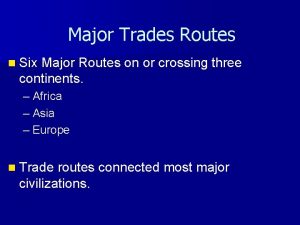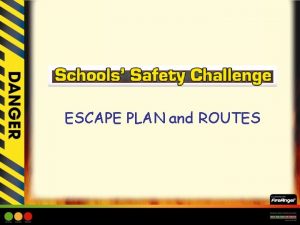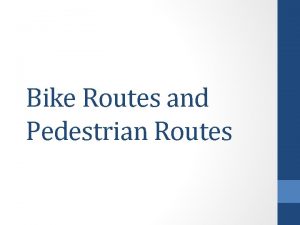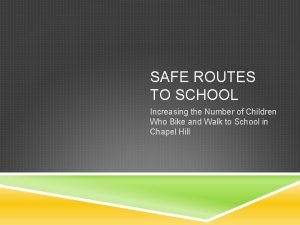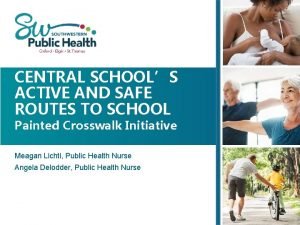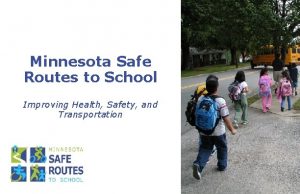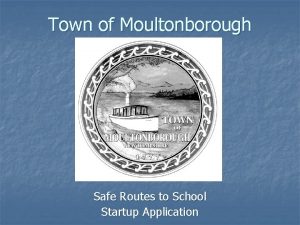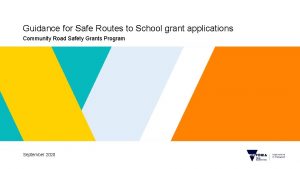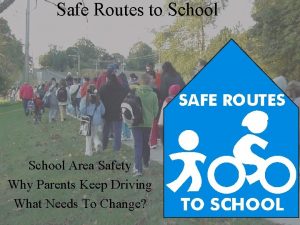Safe Routes History of Safe Routes to School


























- Slides: 26

Safe Routes

History of Safe Routes to School n Many child pedestrian fatalities in Denmark, 1970 s n Odense pilot program reduced the number of injured school children by 30% to 40% n Caught on in UK and Canada in the 1990’s; Bronx, NY in 1997

Why Safe Routes?

Physical activity Most kids aren’t getting the physical activity they need

U. S. youth overweight rates

Overweight children have an increased risk of… • Type 2 Diabetes • Low self esteem • Aggravating existing asthma • Sleep apnea • Decreased physical functioning • Many other negative emotional & physical effects

Physical activity recommendation for children: At least 60 minutes of physical activity on most, preferably all, days of the week. (US Depts. of Health and Human Services and Agriculture, 2005)

Promoting safe walking and bicycling is an ideal strategy to increase physical activity.

Fewer kids are biking and walking. More parents are driving. 2001: n 16% walked 1969: n 42% walked (CDC, 2005)

Individual barriers to walking and bicycling to school n Long distances 62% n Traffic danger 30% n Adverse weather 19% n Fear of crime danger 12% (CDC, 2005)

It’s not just distance Students who live within 1 mile and walk or bike: 2001: 63% 1969: 87% (CDC, 2005)

ROAD and TRAFFICTraffic danger When speeds are lowered from 40 to 20 mph injuries are decreased from 85% 5% deaths.

ROAD and TRAFFICConditions make it hard to walk or bike

Adverse weather

Fear of crime danger n Both perceptions and realities n Some low probability events provoke the greatest fears n Communities are finding ways to safeguard against these fears

Difficult community issues • Traffic flow problems • Abandoned buildings • Illegal behaviors

Creating a Safe Routes Program • Involve the entire community • Utilize existing people and groups with interest • Collect data-Map your community • Analyze problems • Identify projects and Develop a plan • Evaluate, make needed changes and keep moving forward

Elements of a Safe Routes • Education • Enforcement • Encouragement • Engineering • Evaluation

Education Teaching safety skills Creating safety awareness Fostering life-long safety habits Includes parents, neighbors and other drivers

Enforcement Increasing awareness of pedestrians and bicyclists Improving driver behavior Helpings children follow traffic rules Decreasing parent perceptions of danger

Encouragement Increasing popularity of walking and biking Is an easy way to start SRTS programs Emphasizes fun of walking and biking

Engineering Traffic calming and speed reduction improvements Pedestrian and bicycle crossing improvements On-street bicycle facilities Off-street bicycle and pedestrian facilities, Secure bicycle parking facilities

Desired outcomes of the Safe Routes to School Program include: • More children walking and bicycling to and from schools • Decreased traffic congestion • Improved childhood health –decrease obesity • Encouragement of healthy and active lifestyles • Improved community safety – bike, walking and traffic • Reduced fuel consumption and improve air quality • Enhanced community accessibility • Improvements to the physical environment that increase the ability to walk and bicycle to and from schools • Increased interest in bicycle and pedestrian accommodations throughout a community • Improved partnerships among schools, local municipalities, parents, and other community groups, including non-profit organizations

Next Steps

n What would help neighborhood watch Speed limits n More pedestrian traffic n ___ n

Contact Information Connie Abert Waupaca County UW-Extension n 715 -258 -6226 n 811 Harding ST. , Waupaca n connie. abert@ces. uwex. edu n
 Safe feed safe food
Safe feed safe food Safe people safe places
Safe people safe places Vikings routes travelled
Vikings routes travelled Trade routes in the 1500s
Trade routes in the 1500s Tower enroute control
Tower enroute control Central route persuasion
Central route persuasion Routes for learning
Routes for learning Trade routes 1500s
Trade routes 1500s Trade routes in the 1500s
Trade routes in the 1500s Ryles tube feeding indication
Ryles tube feeding indication Transport routes in sap
Transport routes in sap Cognitively based attitude
Cognitively based attitude Dutch exploration routes
Dutch exploration routes 1910 subpart e
1910 subpart e Penicicilin
Penicicilin Bureaucracy
Bureaucracy What are the different routes of drug administration
What are the different routes of drug administration Lux express routes
Lux express routes Who paid for jacques cartier's voyage
Who paid for jacques cartier's voyage Constantinople trade routes
Constantinople trade routes Topical routes
Topical routes Hostile surveillance detection
Hostile surveillance detection An age of exploration and isolation
An age of exploration and isolation Preferred ifr routes
Preferred ifr routes Kennis learning routes llp
Kennis learning routes llp Ducks migrating
Ducks migrating Chapter 3 section 3 seafaring traders answer key
Chapter 3 section 3 seafaring traders answer key




